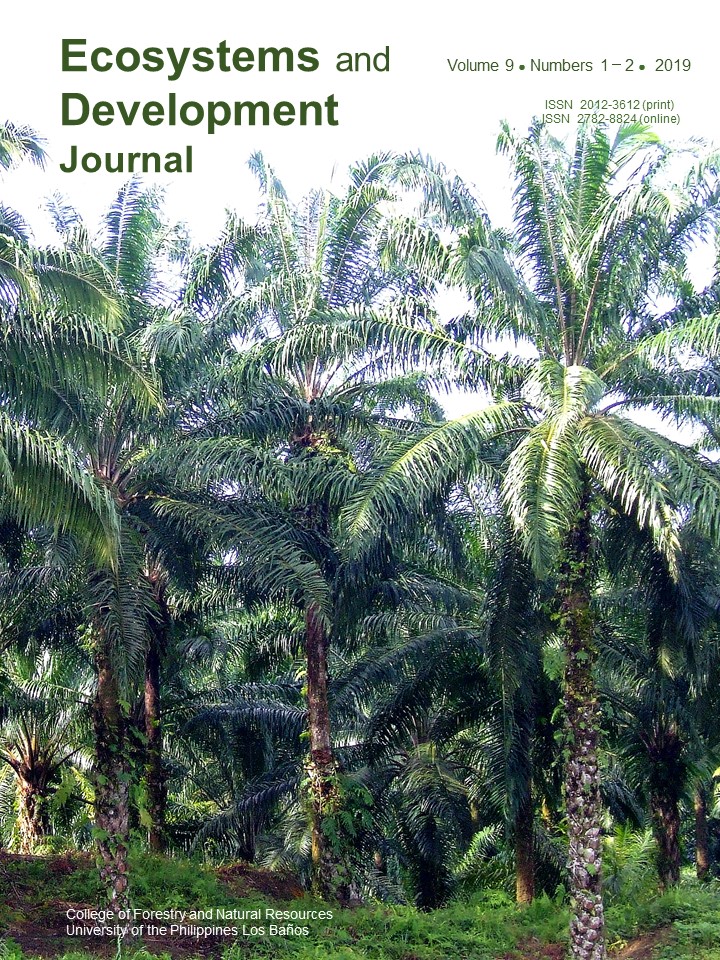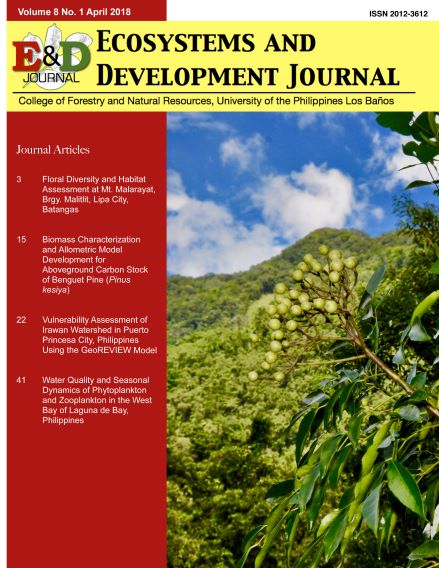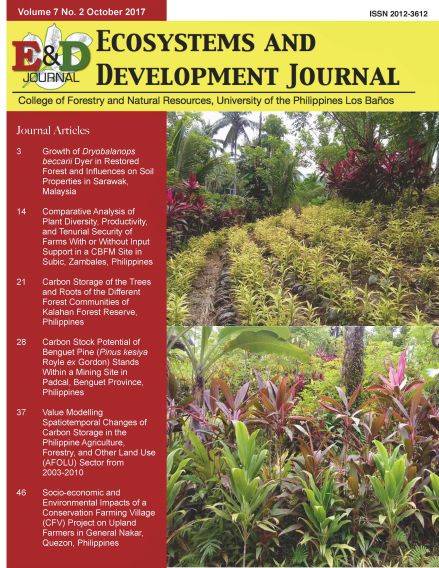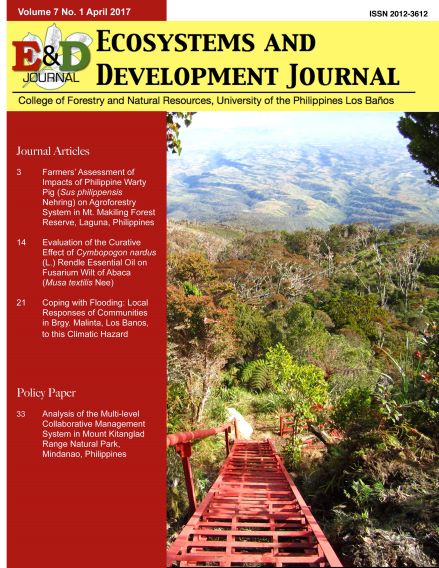
Ecosystems and Development Journal
(ISSN: 2012-3612)
An international refereed journal published semi-annually designed to fill the science-policy interface void in the Philippines and other tropical countries to help legislators, policy-makers, researchers, and natural ecosystems managers become better equipped, more relevant, and more effective.
Read More Submit an articleE&D Journal Guide to Authors
E&D Journal welcomes articles from its readers, friends of the environment, and development advocates. Preferred contributions are well thought?out research articles, policy development articles, and research notes that deal on current issues, on?going debates, and emerging concerns on sustainable
development in tropical forest ecosystems and natural resource environment in the Philippines and other tropical countries. We are particularly interested in the following areas: forest biodiversity; watersheds; protected areas; geology and soils; ecosystem services, functions, and benefits; wildlife
conservation; habitat restoration; forest rehabilitation including agroforestry; plantation forestry; sustainable harvesting of forest products; biotechnology; geomatics; geohazards; climate change; ecotourism; human?nature interactions; forest economics, institutions, and governance.
TYPES OF ARTICLES
Articles must be original, unpublished, not more than 25 pages long (including the abstract, tables,figures, maps, and appendices), and not submitted to other publications for consideration. We accept the
following types of articles:
Research articles should deal with recent findings and data that offer original, innovative, and scientific results relevant to sustainable development; and present new knowledge on systems and how it relates to the society, the economy, and the environment, and its potential application.
Policy development articles must present insights into well?researched and validated development and policy experiences exploring technological aspects in the tropical forest ecosystems and natural resources environment context; findings of practice?oriented research aimed at coping with development challenges and are embedded in national and international policy debates; must cite key documents; and explore the development of ecosystems.
Research notes refer to submitted articles with important findings and require immediate publication but cannot be considered as a journal article.
RECOMMENDED FORMAT
1. Manuscripts should be processed in Microsoft Word 1993?2007 (A4 paper, double?spaced, 12?points Times New Roman) and in American English language. Articles should be submitted with the following sections:
Title – should be less than 20 words and must contain the subject and the significance or purpose of the study (to be followed by list of author/s and affiliation/s, and corresponding author’s e?mail address) on one page.
Abstract ? not more than 250 words and a list of at most five keywords.
Introduction
Methodology – should specify the techniques used and the details of the study area, as well as the limitations of the study
Results and Discussion
Conclusion
Literature Cited
List of Figures and Tables
Acknowledgments – paragraph composed of at most three sentences
2. Manuscripts (including tables, figures, photos, maps, and appendices) should be submitted by e?mail or online submission.
3. Manuscripts with multiple authors are requested to have the co?authorship agreement form signed and submitted.
OTHER DETAILS
1. Use the metric system for data that require units of measure.
2. Use italic type for scientific names, local names and terms, and non?English terms.
3. Submit all figures as separate files; do not integrate them within the text.
4. Use the table functions of your word processing program, not spreadsheets, to make tables.
5. Use the equation editor of your word processing program or Math Type for equations.
6. Number the pages using the automatic numbering function.
7. Use continuous line numbering.
8. Place figure legends or tables at the end of the manuscript.
9. Use left paragraph alignment only (do not justify lines; allow the automatic line wrap to function).
10. Start all heads flush left.
11. Use 2 line spacing all throughout (do not automatically insert extra space before or after paragraphs).
CITING REFERENCES
1. Authors cited in the text, figures, and table captions should be listed in the Literature Cited section.
2. Authors cited as “et al.” in the text should all be enumerated in the References Cited.
3. For citing bibliographic references, refer to the format guidelines here.
REVIEW PROCESS
Manuscripts undergo a double?blind peer review. Effort should be made by the author to prevent his or
her identity from being known during the review process.



